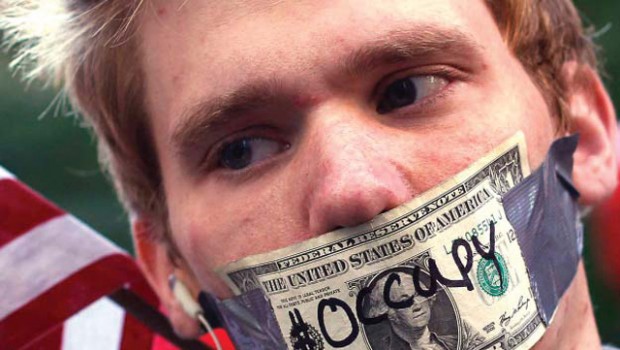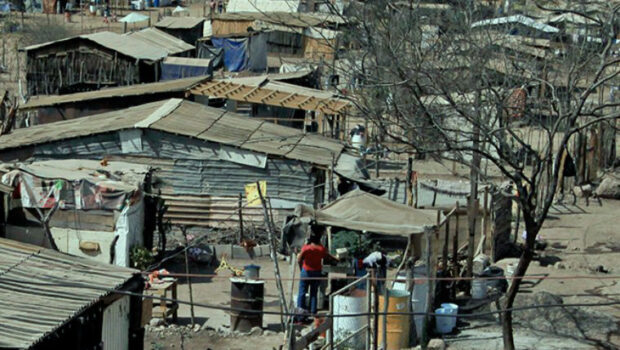A Chinese Curse
Maldición china
Paul Krugman
Economist, prolific writer and sought-after international speaker, Nobel Laureate Paul Krugman gave his economic perspective at Haverford College on the new challenges we are facing and what we need to do in order to overcome the recession.
***
We used to say this Chinese curse, “May you live in interesting times.” It is a myth, there is no such Chinese curse. But there should be, as we now live in interesting times. Over the last three years, we have faced the economic challenge of a lifetime. Who do I mean by “we”? The West, the people in charge–the politicians actually running our countries and the financial officials–but more broadly, the bulk of people who play some role in shaping economic discourse, the terms in which we argue and the ways in which we respond. And so We, and given my perch in The New York Times I include myself in that We, have faced the economic challenge of our lifetime, and We have failed completely. It has been a deeply disappointing and distressing failure. It is not The Great Depression 2.0; it is more like The Great Depression 1.3 or something of that nature. It is bad and it has prolonged. Right now, we offi cially have an unemployment rate of about 9%; but if we think that 91% of the American workforce is okay, we would be wrong. All the people who would be searching for jobs but do not have any prospect of getting one are not counted as unemployed. If we add in all the people who are working part-time or voluntarily, we are up to about 1 in 6. If we add in all the people who are working in jobs that do not make use of their skills, who are seeing their prospects blighted–we are then talking about a large part of the population. It might be improving, but slowly. We are now more than three years past the point at which it appeared that the economy was plunging and we are nowhere near to recovering nor are we doing anything about it. That is what is so remarkable about it. The average duration of unemployment has been 37 weeks. Recent graduates of college are finding employment prospects extremely bad. People’s careers are being blighted, and people my age–men in their late 50s–have lost jobs and see no prospects of ever getting another one again. In this situation one would assume there would be an enormous urgency and public demands to do something, as this is not a tolerable position. But in fact, we are not doing anything. The whole job situation has completely fallen off the table. The tools exist, but the problem is the lack of intellectual clarity and political will to use the tools we have. I’ll try to explain how that happened, followed by what this crisis might do.
Let me start with a story about the way it was. Basically, up until everything went to hell, there was a lot of self-satisfaction among policymakers and economists. There was a widespread belief that we had sort of licked this kind of problem. There are various examples I could use for that. In 2002, the Federal Reserve held a conference that was a sort of 90th birthday conference for Milton Friedman. He had famously argued that the Great Depression happened because the Federal Reserve had failed to do its job, and if the Fed had done what it was supposed to, then it would have been a modest recession, but nothing worse. At that conference, my former department head at Princeton and the current Chairman of the Fed, Ben Bernanke, gave a lovely tribute to Milton Friedman (and his coauthor, Anna Schwartz) saying, “On behalf of the Fed, you were right. We are sorry… But thanks to you and Anna, it won’t happen again.” The gist of what Bernanke said was that we now had the knowledge and could prevent this from happening. Again, it is not the Great Depression 2, but something clearly of the same species as the Great Depression did happen again, and the Fed has failed to prevent it from happening. In 2003, Robert Lucas, a Nobel Laureate and one of the leading macroeconomic thinkers of modern times, gave his presidential address to the American Economic Association. The theme was the problem of the business cycle, the problem of ups and downs and how unemployment was solved for all practical purposes. We had it under control. Therefore, researchers turned their attention to other things, to long run growth because recessions and downturns were solved problems and not interesting anymore. There was a general perception based on what seemed to be a pretty long-time proven experience. In fact, we did have everything solved. The phrase that came into widespread use was “The Great Moderation”. Between the mid-1980s and 2007, we had two recessions, but both of them were fairly mild and were cured with effective policies. We had it under control. The formula was that we would leave the job of keeping the economy stable up to the Federal Reserve or to its counterparts abroad: the European Central Bank, the Bank of England–I would say the Bank of Japan, but the Japanese were already encountering something similar long before the kinds of problems we are suffering now. The politicians could do whatever they were doing, but technocrats at these central banks would keep the economy on an even keel. They would raise interest rates if inflation loomed, cut interest rates if the economy was looking weak, and that would take care of the whole thing. Wobbles, if you will, were expected, but we didn’t worry about the really bad stuff because Uncle Alan or Uncle Ben would step in to make sure nothing really bad would happen. Not only was this notion wrong, but in fact that belief contributed to getting us in the mess we are in, because people really did take it for granted that our economy would not be subjected to severe shocks. That in itself led to an accumulation of vulnerability.
So, what happened? In retrospect, the story now seems pretty clear. Unfortunately, not enough people saw it in prospect; this was about an entirely different crisis. People would ask me, “Didn’t you predict this crisis?” and I would say, “No, I was 90% wrong. The only difference is that a lot of other people were 150% wrong.” I had no idea that something this bad was in the offi ng or even that it was really possible. But here it is.
At any given time, we have a lot of borrowing and lending. Debt is an important part–a crucial part–of how we work a modern economy. You could not imagine all the things we couldn’t do without some ability for people to run up debts. Making it easier for people to run up larger debts adds to efficiency–it means that people who have good projects to invest in or good reasons to spend can do it, and those who do not can make their resources available to others. That is a good thing. However, people understand that debts can go bad, that those who borrow money are sometimes unable or unwilling to pay it back, that those who have purchased a house cannot make the payments or if the value of the house has fallen, they may not be able to honor the loan at all. So at any given time, there are some standards. People put restrictions on how much you can lend. There were notions on what a reasonably-sized down payment on a house was, what a reasonable level of personal debt for people to hold relative to income was and so on. What happened was that with that long period when nothing really bad happened came a long period of steady reduction in the effect of regulation in the banking system– partly because there was deliberate deregulation and partly because the banking system evolved into new forms and regulations did not keep up with that–we had a steady expansion in the amounts of debt that were considered “okay” for people to take on. It is always important to remember that one person’s debt is another person’s asset, so this is not society as a whole going into debt. It is mostly debt we owe to ourselves, but the debtors and creditors are different people and it got much bigger. By 2007, the total amount of U.S. household debt relative to income was twice as large as it had been in 1980. We had moved into having much bigger levels of debt. Then came a moment when people said, “Wait a sec. Maybe we’ve gone a little too far here. Maybe we have too much debt out there.” This kind of story, as some people may know, is associated very strongly now with an heterodox economist who has garnered renewed respect, Hyman Minsky. Paul McCulley of PIMCO, the bond fund, called it the “Minsky moment.” Interestingly, by the way, it really was global. It was not a U.S. crisis. We think of it as being subprime lending, but even in the United States it was much broader than subprime, and it was not only in the U.S. There were housing bubbles and debt crises through much of Europe as well–more or less of equivalent size. I think of it as kind of a North Atlantic crisis–a North Atlantic Minsky moment, where within a relatively short period of time, people decided that U.S. households had too much debt, that Ireland had too much debt, that Greece had too much debt, and so on.
There was a terrible awakening. All of a sudden everyone was required to stop lending to these people and there were lots of demands for quick repayments, causing a crash in asset prices because there were purchases and assets which had their prices inflaged by debt-financed spending. All of that went away, so housing prices dropped. The effect was that debtors were forced abruptly to sharply reduce their spending. It was very asymmetrical. It effectively became a worldwide crash of spending because the North Atlantic is such a large part of the world’s economy. Keep in mind every sale is also a purchase. If a large part of the world buys less, then the world as whole is going to earn less income. It is recession territory–it is slump territory.
This was the sort of thing we were supposed to have known how to deal with. This is where Uncle Alan or, by the time this came, Uncle Ben would deal with it by cutting interest rates to make it more attractive for people who can borrow to borrow and spend more, and if we did that enough, that should have cushioned the effect and avoided the slump.
We did something similar in 1991 when there was a kind of early rehearsal for the current crisis largely because the commercial real estate bubble burst. It is what we did in 2001 after the dot-com and general high tech bubble burst. It is what they tried to do in 2008, but there was a problem that can be summarized in one word: zero. We can cut interests rates, but we can only cut them to zero. Basically, the interest rates over which the Federal Reserve has effective control have been typically running around .1% or .17%–basically zero. The interest rates over which the European Central Bank had control are higher, but there was no real room for cutting. Japan has been up against the zero lower bound, as the jargon has it, for a long time. It has not been remotely enough.
Among other things, the way in which lower interest rates stimulate demand is very largely through housing. There was no way we were getting a housing boom with lower interest rates when we were just coming off a monstrous housing bubble. The narrow, technocratic, apolitical process by which we dealt with recessions past was not remotely enough to deal with this crisis. We spent so much time thinking that everything was under control that we built up a level of over-extended debt that meant that we were exposed to a very great problem.
It is not clear to me, even in retrospect, if there was much of a chance of that not happening. If we could have had better financial regulation, if we could have had more early warnings, it might not have been so bad. However, it is always very diffi cult to argue with prosperity. When people are making money, when prices of houses are rising, the people who say, “Wait a second, this is not good,” always end up looking like spoiled sports. Since these bubbles go on longer than you would expect, the people who warn end up looking really foolish for an extended period. In spite of them saying “this is not sustainable,” it keeps going on. Therefore, I am not sure it could have been stopped. When it broke, the failure set.
To a certain extent, when Bernanke was praising Milton Friedman and when Robert Lucas was saying this thing was solved, they had a point; because unlike our grandfathers and the world facing the Great Depression, we do have a fair bit of understanding of this problem. Yes, people did not see it coming; yes, it came as a shock to realize that the normal tools were not enough, but we understood–or at least I thought we understood–the problem was a lack of sufficient demand and that we were facing a downturn because of this sharp cutback in spending. We understood that government policies could be used to prop up demand. We understood that to some extent, there could have been other things that the Federal Reserve could do. Just cutting interest rates is not its only policy tool. It can certainly try to promise that it will keep interest rates low for an extended period. Perhaps, it will allow some inflation. We know that governments can spend if the private sector does not. If we learned something from the Great Depression, it was what it took to end the Great Depression, which was a very large program of deficit-financed fiscal expansion, otherwise known as World War II. While that was not some sort of intentional policy, the fact that it did end the Great Depression would surely served as a lesson as to how to end this slump, and what we needed was a vigorous response. But it did not happen.
There was a very special period in this crisis. A period that spanned from Sept. 15, 2008 to roughly March or April of 2009, from the fall of Lehman up to the point where financial markets began to think the worst. There was a period of real panic, and that was when there was a call for making really active policy, and in some respects it was quite large. We had a large bailout for the banks, a huge expansion of special credit facilities by the Federal Reserve to make up for the fact that private markets were not functioning, and we had a stimulus plan from the Obama administration–as well as stimulus plans all over the world. But even in that moment, it was never whole-hearted, and it was never really done with conviction. The result was that even in its initial response, it was never enough. This is not hindsight–this was obvious at the time. When we looked at projections of the state of the economy that were available at the beginning of 2009, they suggested that we were going to have a gap over the next three years that needed to be filled between two and three trillion dollars. It was a big shortfall in spending compared to what we needed to have a right level of employment. We know now that Christina Romer, who was head of the Council of Economic Advisors, at least proposed as a possibility a $1.2 trillion stimulus to fill that gap, but that was never even presented to the President. What was presented was something more like $800 billion. A large part consisted of tax cuts that were not likely to be spent and a fair bit of aid to state and local governments. If we look at total government spending–and it is an easy thing to do, just go to the St. Louis Fed website and it will draw the whole picture –total government spending over the past ten years would run so short that you would never know that there had been a stimulus. The spending had flattened out in the recession and aftermath with no net stimulus. We never got enough.
Why did we not have a Great Depression all over again? What was different this time? Well, part of the answer is that we did learn something. During the Great Depression, a lot of central banks actually raised interest rates because they were trying to hold on to their gold reserves, and we did not do that, so that was good. Banks were allowed to fail right and left, and we did not let that happen. But I would say the main reason we did better was not was not because of we did actively. Our salvation was that government is enormous. This time around, although wage income was falling and people were losing their jobs, social security checks kept coming and Medicare kept on paying the health bills. There was a sort of base government spending that did not exist in 1929, which provided a floor below the economy. It also meant we went into big budget deficits because spending went on while revenue plunged; but that was actually a good thing, at least at the time, because it helped us avoid the worst.
By late 2009, it was pretty obvious that those of us who were really upset with the inadequate stimulus, realized we were not actually on a rapid path back to full employment. At that point, we all sat down and said, “We’ve got to do more to support this economy and help the unemployed.” Well, of course, that did not happen. What happened from that point onwards and is continuing to happen, is a steady process of dumbing down, of throwing away the things we were supposed to know. While the worst discussion has originated from one party, but a lot of the dumbing down has been a bipartisan effort, at least in the US. In 2010 a discretionary spending was announced in spite of the understanding that that was not what we needed to do right away.
Europe felt into its crisis through a route that, in its details, is very different from ours. They essentially achieved the same result through corrupt banking, which led them to massive housing bubbles. The Irish and Spanish housing bubbles were bigger than the U.S. at the national level–although the one in U.S. was very uneven. Roughly speaking, we should think of Spain and Ireland as having housing bubbles that were comparable to coastal Florida and southern California, only bigger. When the bust came, it was every bit as big as the one in the United States, differing slightly in that Europe does not have a single government. We had the perceived notion that banks were too big to fail, but in Europe the banks were too big to save.
On both sides of the Atlantic there is now a widespread belief in the doctrine that what we really need is to slash spending to raise demand. An important point to make is that a normal response to a financial crisis is an enduring devaluation which provides an export boom. The problem right now is that, since this is a global crisis, unless we can find another planet to export to, that is not a workable solution. Where does that leave us? Well, the debate in Washington and, in a different way, the debate in Europe is no longer about how we can create jobs. It is only about how deeply are we going to cut– basically how many jobs are we going to destroy. We have no job creation policy; we only have a competition between serious austerity and extremely harsh austerity on both sides of the Atlantic.
It is worth saying that the United States and the European nations have immense capabilities. A country like the US with any kind of political consensus is capable of dealing with awesomely difficult challenges. We have the resources, but we lack the clarity and political consensus.
Everybody wants someone else to bear the burden. People go for economic doctrines that fit their political preconceptions–never mind the evidence. This is what leaves us so paralyzed. This is a big challenge, by the way, for people like me who basically have a Keynesian view of the world. We have to face up to the fact that we have a theory that tells us what to do with no real hope that, following the actions necessary, it will actually yield results given the political system that we have, which is a very difficult position in which to find yourself.
So, what happens now? The answer, I think, is that slowly the economy will heal itself. There is one respect in which I have become more optimistic over the past year or so, which is that I was unsure that there was any natural end to this kind of slump; but the more I work on it, the more I look at the roots, the more I think there is a natural end. The fundamental problem we have is a buildup of debt, particularly household debt, and it is slowly being paid down. Households are reducing their debt. Actually, it is falling even in dollar terms, although a lot of that is apparently not people paying off their debts but rather defaulting on them–but still, the amount of household debt is falling. The economy and the dollar value of GDP is continuing to grow, so the value of debt relative to the economy is declining at a perceptible pace and there is a process of healing that goes on. But it’s info citing enormous amount of damage in the process. To say that the economy might heal itself in ten years does not mean we will be okay. We have seen millions of lives affected. Particularly we have seen millions of young people’s careers poisoned because there have been no jobs when they graduated. However, the economy will gradually heal itself. I wish I could say there was a prospect of something that could break that, but we cannot seem to be able to get the political consensus to do it. Again, the Great Depression was not ended though deliberate policy actions but through war.
We have learned–the IMF is admitting this now–that we probably set inflation targets too low. If we had come into this problem with 5% inflation instead of roughly 2%, despite the inconveniences of having the rate at 5% as opposed to 2%, we could have come into the crisis with interest rates about 3% higher and had those extra 300 basis points of potential room to cut interest rates, which would have been really handy. We should have higher infl ation targets (and that is something we can get people to eventually accept over time). We were actually too good at maintaining price stability, and that got us in trouble. With respect to financial regulation, it is imperfect. Given time, the bankers will always find ways around it–they can afford much more expensive lawyers.
We went about 50 years without a major banking crisis, and that was not really because my father’s generation was more reasonable and sensible. It was because we had a lot of financial regulations that came in the wake of the Great Depression, and they limited risk taking and borrowing. If we can do something like that, if we can get half a century or even 25 years of relative stability, I would take it.
En una charla realizada recientemente en el Haverford College, el economista y premio Nobel Paul Krugman ofreció sus puntos de vista sobre el panorama económico global. Las siguientes páginas forman parte de esa conferencia.
***
Con frecuencia recurrimos al dicho conocido como “la maldición china”: “Ojalá te toquen tiempos interesantes”. Aunque se trata de un mito: no hay tal maldición, aunque debería haberla dado que, en efecto, vivimos tiempos interesantes. Y no es para menos ya que en los últimos tres años enfrentamos al desafío económico de nuestras vidas. ¿Qué quiero decir con este tácito “nosotros”? Me refiero a la gente que en Occidente ostenta un cargo –los políticos en funciones junto con las instituciones financieras oficiales– aunque, de manera más general, aludo también a las personas que desempeñan algún papel en la conformación del discurso económico –los términos en que razonamos y la manera en que respondemos. Así que “nosotros”, y dada mi posición en el New York Times me veo implicado también, hemos enfrentado el desafío económico de nuestras vidas y fracasamos rotundamente. El revés ha sido profundamente decepcionante y preocupante. No se trató de una suerte de Great Depression 2.0 sino que pareció más bien una Great Depression 1.3, drástica y prolongada. Oficialmente tenemos una tasa de desempleo de alrededor del 9%, pero si creemos que el 91% de la fuerza laboral del país se encuentra bien en este momento, estaríamos en un error más que evidente. Lo cierto es que toda la gente que anda buscando empleo sin posibilidades de encontrarlo no se cuenta como desempleada. Si a ello sumamos quienes trabajan de medio tiempo o como voluntarios, el desempleo es de una persona por cada 6. Asimismo, si añadimos a todos los subempleados (quienes han visto arruinadas sus perspectivas de vida), estamos hablando de una parte sustantiva de la población. Y aunque la realidad podría estar mejorando de algún modo, las cosas suceden de manera muy lenta. En este sentido, parece evidente que hoy nos encontramos peor que hace tres años, cuando creímos que la economía estaba tocando fondo. Ahora bien, si nos encontramos aún muy lejos de cualquier recuperación, la verdad es que no estamos haciendo nada al respecto. En fechas anteriores el tiempo promedio de desempleo era de 37 semanas: hoy los recién egresados de la universidad no encontrarán alternativas fácilmente. Las carreras de las personas se están arruinando y la gente de mi edad –hombres en sus tardíos 50 años– que han perdido sus empleos no cuentan con la posibiidad de conseguir otro. En esta situación sería de esperar la urgencia y reclamo públicos por hacer algo ante esta situación intolerable. Pero, repito, no estamos haciendo nada e, incluso, el tópico del “pleno empleo” ha abandonado ya la mesa de discusiones. Las herramientas para encontrar una solución existen; sin embargo, el problema radica sobre todo en la falta de claridad intelectual y voluntad política para utilizar dichas herramientas. Trataré de explicar cómo y por qué sucedió.
Básicamente, hasta antes de que todo se desplomara era visible una enorme autosatisfacción por parte de los políticos y economistas. Existía la creencia generalizada de que sabíamos cómo darle una especie de paliza a este tipo de problemas. Ofrezco varios ejemplos. En 2002 la Reserva Federal llevó a cabo una conferencia que terminó siendo algo así como una celebración por los 90 años de Milton Friedman. He sostenido que la famosa Gran Depresión ocurrió porque la Reserva Federal había dejado de hacer su trabajo, de modo que si aquella hubiera hecho lo que debía, habríamos vivido sólo una recesión modesta, pero nada más. En esa conferencia Ben Bernanke, mi antiguo Jefe de Departamento en Princeton y actual presidende de la Fed, ofreció un tributo a Milton Friedman y a su coautora, Anna Schwartz, afirmando: “De parte de la Fed, te damos la razón. Fuimos nosotros. Lo sentimos… Pero gracias a ti y a Anna, no volverá a suceder”. La moraleja –que la Fed no entendió– es que hoy contamos con un mejor conocimiento y pudimos evitar que esto sucediera. Debemos decir una vez más que no se trata de la Great Depression 2.0, pero es algo de la misma especie y que la Fed no ha podido evitar. En 2003 Robert Lucas, premio Nobel y uno de los principales pensadores de la macroeconomía de los tiempos modernos, dio un discurso ante la American Economic Association. Su tema fue el problema de los ciclos económicos, es decir, el dilema de las altas y bajas del desempleo y cómo manejarlo. Según él, todo lo teníamos bajo control. Por lo mismo, los investigadores centraban su atención en otras cosas; por ejemplo, en el crecimiento a largo plazo debido a que las recesiones y las crisis eran problemas resueltos y no interesaban más. Dicha percepción general descansaba sobre la base de lo que sugería nuestra larga experiencia probada. De hecho parecía que, efectivamente, teníamos todo resuelto y la frase que entró en uso corriente fue “The Great Moderation”. Entre mediados de los años 1980 y 2007 tuvimos dos recesiones bastante leves que se resolvieron con políticas eficaces. Todo estaba bajo control. Nuestra fórmula fue dejar el trabajo de mantener la economía estable a la Reserva Federal o a sus homólogos en el extranjero: el Banco Central Europeo, el Banco de Inglaterra –y yo diría que también el Banco de Japón, aunque los nipones ya estaban enfrentando problemas similares a los que hoy padecemos. Los políticos podían hacer lo que quisieran pero los tecnócratas en los bancos centrales debían mantener la economía a flote. Elevarían las tasas de interés si la inflación se cernía o, por el contrario, las reducirían si veían un mercado débil. La economía se tambalearía ocasionalmente si ustedes quieren, pero no como para preocuparse ya que el tío Alan o tío Ben intervendrían para asegurarse de que nada malo sucediera realmente. Sin embargo, esta idea no sólo era equivocada sino que contribuyó al lío en que estamos metidos porque la gente dio por sentado que nuestra economía no sería sometida a fuertes impactos, lo que, en sí mismo, significó un incremento de la vulnerabilidad.
¿Qué sucedió entonces? En retrospectiva la historia parece bastante clara. Desafortunadamente, no muchas personas piensan así: se trataba de una crisis absolutamente diferente. A este respecto me preguntan: “¿No previó usted esta crisis?” Y no puedo más que responder: “No. Yo estaba un 90% equivocado. La única diferencia es que la mayoría estaba un 150% equivocada.” No tenía ni idea de que algo malo se encontraba a la vista. Ni siquiera que la crisis era realmente posible.
En un momento dado tuvimos una gran cantidad de empréstitos y de préstamos. Ahora bien, la deuda es una parte importante –y crucial– de cualquier economía moderna. Nadie puede imaginar todas aquellas cosas que no podríamos hacer sin cierta capacidad para contraer deudas. Para la gente es más razonable acumular créditos considerables si se administran con efi ciencia. Esto repercute en que las personas que tienen proyectos viables para invertir –o buenas razones para gastar– lo hagan; y quienes no, puedan poner sus recursos a disposición de los demás. Esto es bueno aunque, como siempre, la gente entiende que las deudas pueden ir mal, que quien pidió dinero prestado es incapaz o reacio a devolverlo, que alguien que ha comprado una casa a plazos no podrá hacer sus pagos y, si el valor de la vivienda desciende, no respetará los compromisos del préstamo. Para casos así, y si la ocasión lo requería, existían algunas normas. La gente imponía restricciones sobre cuánto podía prestar. Por ejemplo, existían nociones sobre un pago inicial razonable cuando se trataba de una casa o un nivel inteligente de deuda personal del que las personas disponían en relación con su ingreso, etc. Lo que sucedió con la crisis fue que, tras un largo periodo en que nada realmente malo había pasado, vino un lapso donde los mecanismos regulatorios del sistema bancario dejaron de actuar –en parte porque había una política deliberada y, asimismo, porque el sistema evolucionó de tal forma que las regulaciones no dieron cuenta de dicha evolución. En este lapso experimentamos una expansión sin contratiempos en cuanto a los niveles de deuda aceptables para la gente. Siempre es importante recordar que la deuda de una persona es el activo de otra, por lo que no es lógico pensar que la sociedad en su conjunto está endeudada con agentes externos. Es sobre todo la deuda que tenemos entre nosotros mismos la que se hizo mucho más grande, aunque los deudores y los acreedores fueran personas diferentes. En relación al ingreso, en 2007 el monto total de la deuda de los hogares en EE.UU. fue dos veces más grande de como había sido en 1980. Nos habíamos desplazado a niveles mucho más significativos de endeudamiento. Así llegamos al punto en que la gente comenzó a decir: “Tal vez hemos ido demasiado lejos. Tenemos demasiadas deudas…“ Este tipo de percepción, como algunos saben, se asocia al nombre de un economista heterodoxo que ha ganado un renovado respeto: Hyman Minsky. Paul McCulley de PIMCO, el fondo de bonos, calificó como “Minsky moment” al periodo donde la gente empieza a temer en términos económicos. Por cierto, se trató de una percepción interesante ya que fue global, no sólo de los EE.UU. En algún momento creíamos que se trataba de un caso similar al de los préstamos de alto riesgo (subprime) pero, incluso en los Estados Unidos, resultó mucho más amplio y complejo. Hubo burbujas inmobiliarias y crisis de créditos también en gran parte de Europa, todas de tamaño más o menos equivalente. Una suerte de “Minsky moment” del Atlántico Norte donde, con un tiempo relativamente corto de diferencia, la gente creyó que en los hogares de EE.UU. lo mismo que en los de Irlanda, Grecia, etc., había demasiada deuda.
Hubo un terrible despertar y de repente todo el mundo se vio obligado a no otorgar más créditos. Presenciamos una gran cantidad de solicitudes de pago de deuda, desencadenando la quiebra en los mercados de las acciones en la medida de que éstas habían sido infladas (todas las compras se hacían a base de créditos). El mercado se salió de control y las cotizaciones inmobiliarias se desplomaron. Al mismo tiempo, los dueños de las casas que debían devolver sus créditos se quedaron sin dinero para comprar nada más y, en consecuencia, redujeron drásticamente todos sus gastos. Fue algo muy caótico. Por lo mismo, hemos experimentado una quiebra general en cuanto al capital adquisitivo debido a que el Atlántico Norte es una parte determinante de la economía mundial.
Algunos de los principios básicos de la economía que necesitamos entender es que cada venta constituye una compra. Si una parte considerable del orbe compra menos, entonces el mundo en su conjunto obtendrá menos ingresos. Y este es, precisamente, el ámbito de la recesión. Un tipo de cosas que se supone sabíamos ya cómo tratar. Aquí es donde el tío Alan o el tío Ben se ocuparían reduciendo las tasas de interés. De ese modo –y según el modelo antes comentadoharían más atractiva la posibilidad de que la gente pudiera pedir prestado. Gastaría más y si habíamos hecho lo sufi ciente para corregir el rumbo, debíamos amortiguar el efecto evitando cualquier caída.
Algo similar habíamos hecho ya en 1991, cuando aconteció una suerte de ensayo de la actual crisis. Lo hicimos también en 2001 con las punto-com y, en general, con la explosión de la burbuja tecnológica. Y es lo que tratamos de hacer en 2008, aunque hubo un problema, que se resume en una sola palabra: cero. Podemos bajar las tasas de interés todo lo que uno quiera, pero no más allá de cero. Básicamente, las tasas sobre las que la Reserva Federal mantiene hoy un control efectivo han estado entre 0,1% y 0,17%. Fundamentalmente cero. Por su lado, aquellas sobre las cuales el Banco Central Europeo tenía el control han sido un poco más altas, pero sin espacio real para un mayor recorte. Japón ha estado siempre en contra del “zero lower bound” [límite inferior a cero], como dice la jerga, desde hace mucho tiempo.
Todas estas medidas no han sido ni remotamente suficientes.
Entre otras posibilidades, la forma en que las tasas de interés más bajas estimulan la demanda puede verificarse en el ámbito de la vivienda. Sin embargo –y justo cuando estábamos a mitad de una burbuja inmobiliaria monstruosa– no hubo manera de propiciar un auge en este terreno bajando los intereses. La reducción de las tasas, un proceso tecnocrático y apolítico mediante el cual siempre nos habíamos ocupado de las recesiones, no estaba siendo suficiente para hacer frente a esta crisis. Vivimos tanto tiempo pensando que todo estaba bajo control que arribamos a un nivel grave de sobregiro viéndonos expuestos a un problema de deuda realmente muy grande.
Incluso en retrospectiva no está claro para mí si había posibilidad de que las cosas no ocurrieran así. Si hubiéramos tenido una mejor regulación financiera o mayores advertencias a tiempo podría no habernos ido tan mal. Sin embargo, siempre es muy difícil discutir con la prosperidad. Cuando las personas están haciendo dinero y, por otro lado, los precios de las casas suben y suben, no falta gente que dice “esto no es bueno…”aunque terminen siendo los aguafi estas. Y si tales burbujas tienden a prolongarse más de lo que cabría esperar, aquellas personas resultan realmente necias. Pero a pesar de que continúen diciendo “¡esto no es sostenible!”, las cosas siguen igual. En este sentido, no estoy seguro de que lo sucedido podría haber sido de otra manera. Y cuando la situación finalmente estalló, nuestro fracaso se tornó evidente.
Hasta cierto punto, cuando Bernanke ensalzaba a Milton Friedman o cuando Robert Lucas afirmaba que todo estaba resuelto, ambos coincidían en sus diagnósticos. Pero a diferencia de nuestros abuelos frente a la Gran Depresión, hoy tenemos una comprensión ligeramente mayor sobre este tipo de problemas. En efecto, la gente no lo vio venir y fue un shock percatarnos de que nuestras herramientas habituales no eran suficientes… No obstante, hemos entendido –o al menos creímos entender– que el problema se encuentra en que no hay una demanda suficiente, de manera que la crisis actual radica en esta fuerte reducción del gasto. Asimismo, hemos entendido que las políticas gubernamentales pueden emplearse para sostener la demanda. En cierta medida, también hay otras cosas que la Reserva Federal pudo haber hecho. Reducir las tasas de interés no es su única herramienta política. Ciertamente, lleva consigo la promesa de mantener bajas las tasas de interés durante un periodo prolongado. De igual modo, podría permitir cierto incremento de la infl ación. Hoy sabemos que los gobiernos pueden gastar si el sector privado no lo hace. Si hubo algo que aprendimos con la Gran Depresión fue que, para ponerle fin, fue necesario un programa a fondo de déficit financiado mediante una gran expansión fiscal. Una “expansión fiscal“ mejor conocida como la segunda Guerra Mundial que, a pesar de que no constituyó una política deliberada, el hecho es que puso fin a la Gran Depresión y nos sirvió como una lección sobre cómo salvar una mala racha. Hoy se necesita una respuesta también vigorosa, pero no ha sucedido nada así.
Hubo un periodo especial en esta crisis que abarcó del 15 de septiembre de 2008 a marzo o abril de 2009, desde la caída de Lehman hasta el momento en que los mercados financieros comenzaron a temer lo peor. Una temporada de verdadero pánico en la que se dio el intento de gestionar una política verdaderamente activa y, en algunos aspectos, de gran alcance. Tuvimos un plan amplio de rescate para los bancos. Hubo, además, un enorme incremento de créditos especiales por parte de la Reserva Federal con el propósito de compensar el hecho de que los mercados privados no estaban funcionando. De igual modo, contamos con un plan de estímulos de la administración de Obama así como planes similares implementados en todo el mundo. Ahora bien, incluso en el momento más severo de la crisis nada de aquello se efectuó con auténtica convicción. El resultado, aun como respuesta inicial, nunca fue suficiente. Esto no es una explicación retrospectiva, fue evidente desde el primer momento. Cuando analizamos las proyecciones de la economía disponibles a principios de 2009, advertimos la posibilidad de una disparidad para los siguientes tres años, una disparidad que debía ser llenada con entre dos y tres billones de dólares. Era un défi cit del gasto enorme en comparación con el nivel adecuado para esta aplicación. Ahora sabemos que al menos Christina Romer, quien era jefe del Consejo de Asesores Económicos, propuso la posibilidad de un estímulo de $1,2 billones para llenar ese vacío, pero su plan nunca llegó hasta el presidente. Lo que se presentó consideraba un monto de alrededor de $800 mil millones. Un gran porcentaje consistió en recortes de impuestos junto con un poco de ayuda por parte de los gobiernos estatales y locales. Si nos fijamos en el gasto total del gobierno en los últimos diez años –algo fácil ya que basta con ir a la página web de la Fed of St. Louis– el monto del estímulo es tan bajo que nunca sabríamos que había existido. El gasto público se había mantenido bajo durante la recesión y sus secuelas sin una red de estímulos efectiva. Nunca fue suficiente.
¿Por qué no hemos tenido una Gran Depresión? ¿Qué ha sido diferente esta vez? Parte de la respuesta está en que algo hemos aprendido. Durante la Gran Depresión muchos de los bancos centrales aumentaron sus tasas de interés tratando de aferrarse a sus reservas de oro. Nosotros no lo hicimos así y fue lo correcto. De igual manera, en aquel momento se permitió que los bancos quedaran mal a diestra y siniestra. Nosotros evitamos que sucediera algo similar. Sin embargo, yo diría que la razón principal por la que nos fue mejor no se debe del todo a lo que hicimos de manera directa. En realidad, nuestra salvación fue que el gobierno es enorme. En esta ocasión y a pesar de que los ingresos salariales cayeron y las personas estaban perdiendo sus puestos de trabajo, los controles de seguridad social y Medicare siguieron pagarndo las cuentas de salud. Por lo mismo, hubo una suerte de gasto base del gobierno –que no existió en 1929–, el cual nos proporcionó un piso para la economía. Por otro lado, es cierto que así ingresamos en un gran défi cit presupuestal ya que los gastos continúan mientras el ingreso se hunde. No obstante, la medida fue positiva, al menos por el momento ya que nos ha ayudado a evitar lo peor.
A finales de 2009 fue obvio –sobre todo para quienes estaban contrariados por la insuficiencia del estímulo gubernamental– que no estábamos volviendo al camino del “pleno empleo” de manera rápida. ¿Qué pasó a partir de ese punto? Yo diría que un proceso constante de entorpecimiento, de hacer a un lado las cosas que se supone que ya sabíamos. La discusión al respecto fue muy mal llevada por parte de un partido, aunque, en realidad, mucho del embrutecimiento ha sido una proeza bipartidista, al menos en los EE.UU. En 2010 se anunció un gasto bastante discrecional, a pesar de la evidencia de que eso no era lo que debíamos hacer de inmediato.
Europa cayó en la crisis por una vía que, en sus detalles, es muy diferente a la nuestra. Sin embargo, el resultado fue el mismo gracias a una banca corrupta que los condujo a burbujas inmobiliarias masivas. Las irlandeses y españolas eran más grandes que las de EE.UU., aunque la de EE.UU. fue más accidentada. En términos generales, debemos pensar que España e Irlanda tienen burbujas inmobiliarias parecidas a las de la costa de Florida y el sur de California, aunque como dije, más grandes. Y cuando la quiebra llegó fue tan grave como la nuestra, con la diferencia de que Europa no tiene un solo gobierno. Existía la noción de que los bancos eran demasiado grandes para fracasar. Bueno, en Europa había bancos demasiado grandes como para ser rescatados.
En ambos lados del Atlántico existe la creencia generalizada de que necesitamos recortar el gasto para aumentar la demanda. La respuesta usual a una crisis financiera es, según la doctrina, una gran devaluación, lo que propicia un auge de las exportaciones. El problema ahora es que se trata de una crisis global, y a menos que encontremos otro planeta para exportar, aquella no es una solución viable. El debate en Washington, y a su manera también el de Europa, no es acerca de cómo podemos crear puestos de trabajo sino hasta qué punto vamos a recortar: esencialmente, cuántos puestos de trabajo vamos a destruir. No contamos con una política de creación de empleo, sólo tenemos los contrastes entre una austeridad seria o una austeridad extremadamente severa en ambos lados del Atlántico.
Vale la pena decir que los Estados Unidos y las naciones europeas tienen posibilidades inmensas. Un país como los EE.UU. es capaz de enfrentar retos increíblemente difíciles. Ahora bien, tenemos los recursos, pero nos falta la claridad y el consenso político necesarios. En tal contexto, todo el mundo quiere pasarle la carga al otro. Cierta gente asume las doctrinas económicas que se ajustan a sus prejuicios políticos y no importan las evidencias en contra. Y esto es lo que nos ha dejado tan paralizados. Se trata de un gran desafío para gente que, como yo, tiene una visión keynesiana del mundo. Debemos afrontar el hecho de que contamos con una teoría que nos indica qué hacer pero sin esperanza real de que –tras las acciones pertinentes– habrá buenos resultados dado el sistema político que tenemos.
¿Qué pasará entonces? Mi respuesta es que poco a poco la economía se curará a sí misma. Hay un punto por el cual me he vuelto más optimista en el último año. En efecto, antes no estaba seguro de que hubiera un término natural para este tipo de crisis; no obstante, en cuanto más se trabaja en ella parece que sí. Nuestro problema fundamental es la acumulación de deuda, especialmente la de los hogares. Dicha deuda está reduciéndose, aunque lentamente –incluso en términos del dólar. Y es que mucha de la gente endeudada no es del tipo que no paga, sólo que se demora en ello. Por su parte la economía, el valor en dólares del PIB, sigue creciendo. Se trata de un proceso de sanación contínuo aunque la evolución no está exenta de provocar una enorme cantidad de daños. Esto hace suponer que dentro de diez años la economía se curará, aunque ello no significa que vaya a estar bien. Hemos visto millones de vidas afectadas; en particular, millones de carreras de jóvenes envenenadas por la falta de puestos de trabajo después de graduarse. Sin embargo, la economía sanará paulatinamente. Me gustaría poder decir que existe alguna posibilidad de que podamos aligerar esto pero, al parecer, aún no somos capaces del consenso político necesario para lograrlo. (Una vez más: la Gran Depresión no terminó gracias a las acciones de una política deliberada sino a causa de la guerra.)
Hemos aprendido –el FMI lo admite ahora– que probablemente establecimos metas de infl ación demasiado bajas. Si hubiéramos enfrentado este problema con 5% de infl ación en lugar de aproximadamente el 2%, a pesar de los inconvenientes que implican estos porcentajes, podríamos haber arribado a la crisis con tasas de interés más altas, sobre el 3%, teniendo 300 puntos básicos de margen potencial para reducir las tasas de interés, lo que habría sido muy útil. Por lo tanto, en el futuro deberíamos tener topes mayores de inflación (algo que podemos hacer que la gente acepte con el tiempo). En la actualidad estamos realmente bien en cuanto a estabilidad de precios, alejándonos de lo que nos había metido en problemas. Con respecto a la regulación financiera, aún es imperfecta. (Por lo demás, con el tiempo los banqueros siempre encontrarán la manera de evitarla, entre otras cosas porque pueden costearse cualquier abogado muy caro).
Nos mantuvimos cerca de 50 años sin una gran crisis bancaria y, en realidad, no se debió a que la generación de mi padre fuera más razonable y sensata. Fue porque teníamos una serie de regulaciones financieras creadas a raíz de la Gran Depresión, restricciones que limitaron la toma de riesgos y los préstamos. Si podemos hacer algo por el estilo y así obtener 50 o incluso 25 años de relativa estabilidad, yo lo tomaría.










